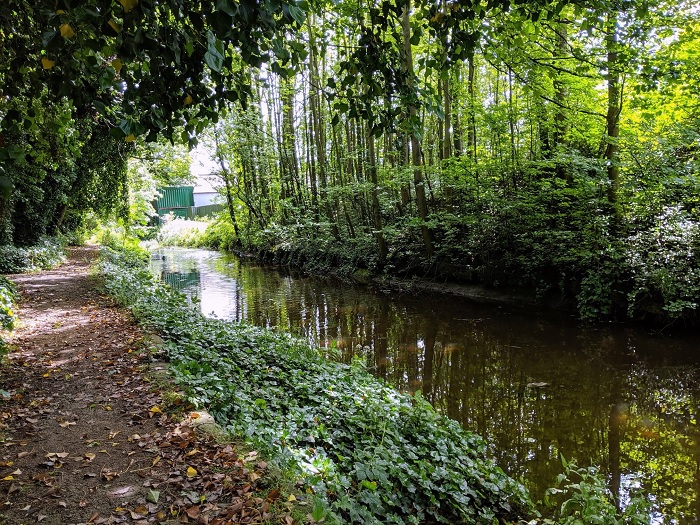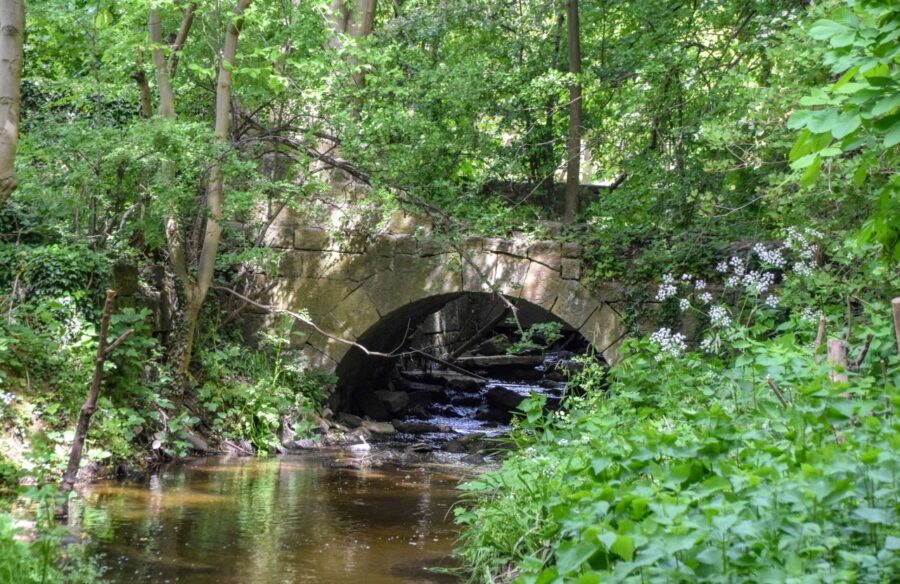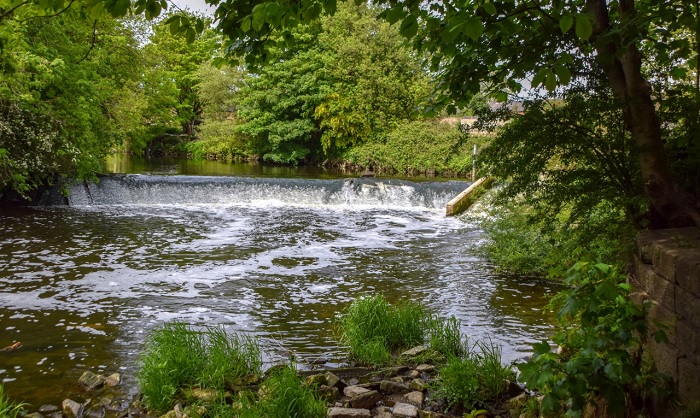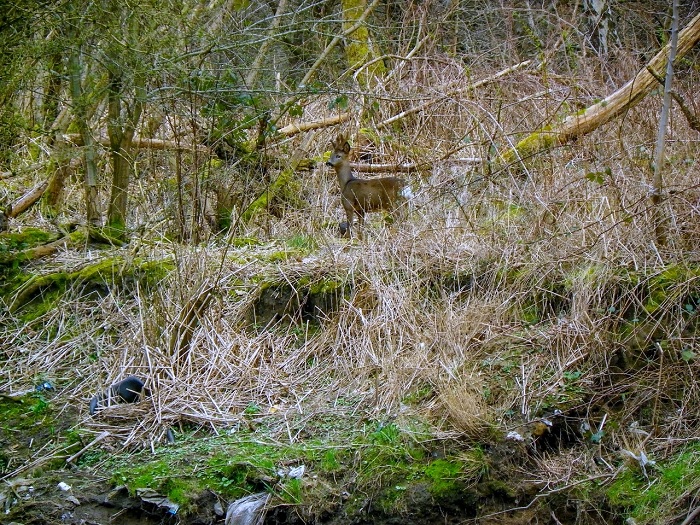At the back of Kirkstall Morrisons is a very Georgian walk, writes Mark Stevenson.
You have a very rare Georgian mill that was state-of-the-art when it first opened in the 1830’s (it had inside flushing toilets), along with the remains of a pump house, goits and various other little gems.
Surprisingly – considering how old and rare these structures are – none of them are listed.
Did I mention there is a pebble ‘beach’ along the way as well? Here’s the map of our walk:
There is a little car park at the junction at Savin Mills Way and Commercial Road. If you look at the far corner of it you will see a kissing gate (1). This is where you start the short walk.
Go through the gate and keep the water on your right all the way along the walk. The first stretch of water you come across is the old Mill Race (2). This is a good place to spot Kingfishers.

As you walk along the footpath you will notice a pylon (3). This is roughly the site of a congregational chapel, you can still see the gate posts on the main road.
Once you reach the end of the Mill Race you will come to a road. If you turn right it will take you to St Ann’s Mills (4), the rare Georgian mill I mentioned earlier.

If you go to look at this just come back to the end of the Mill Race and look directly across the road and you will see a footpath leading off into the trees.
Follow the footpath and eventually you will come to the ruins of the pumphouse (5) and the remains of other structures. You can’t but fail to hear the noise of the weir (6).

This area is well worth exploring and near the weir is a recently built fish pass, of which you will see more being built over the next few years to help with the re-introduction of salmon to this part of the River Aire.

This is where the pebble ‘beach’ (7) is. If you are lucky you might also see deer in the trees opposite.

You have to walk back on yourself from here as the trees become impassable a little further down the river bank.
More information on the history of the area is available here.
Read more on West Leeds’ history in our regular Mark’s History column here.

Kirkstall Congregational Chapel was my church, I lived in St. Stephens Place which was a group of 4 houses on the left of the lower half of Beecroft Street, but I am unable to find it on any old map of Kirkstall. My grandparents lived there before us, (Ross funeral directors, ) and we moved in after grandad, Lawrence died. Approx 1952.
Hello Mark
I’ve really enjoyed your virtual history walks and have often visited the places you’ve mentioned in your articles. However I’d appreciate a more sensitive approach when writing about green spaces, especially during the peak breeding season for wildlife.
The walk you highlight above is the most wildlife sensitive area in Kirkstall. To draw attention to what you describe as a ‘pebble beech’, showing a chair in the middle of it, can only give a green light to anyone seeking somewhere to have a barbecue and a swim. The same thing has happened on the Armley side of the river after it was also recently promoted as a beech. These areas have been quiet and peaceful wildlife refuges since the clean up of the River Aire. I’ve already noticed an absence in a particular species since the use of the Armley branch of the river.
We are already having difficulties with serious disturbance from all night, floodlit student raves at Kirkstall Valley Nature Reserve. Persistent daytime disturbance of nesting river birds will quickly see the demise of breeding water birds in our area.
Most people are completely unaware about the diversity of wildlife that live in their city. We would love to be able to share this more widely however, there are still people who would use that information for mischief. Sadly, we see this kind of behaviour every day in the UK. Most people just don’t realise that they are causing a disturbance but nevertheless, the disturbance still happens when humans behave noisily in secluded green spaces. The damage may have already been done but I ask you in future to seek advice from your local experts when publishing your walks.